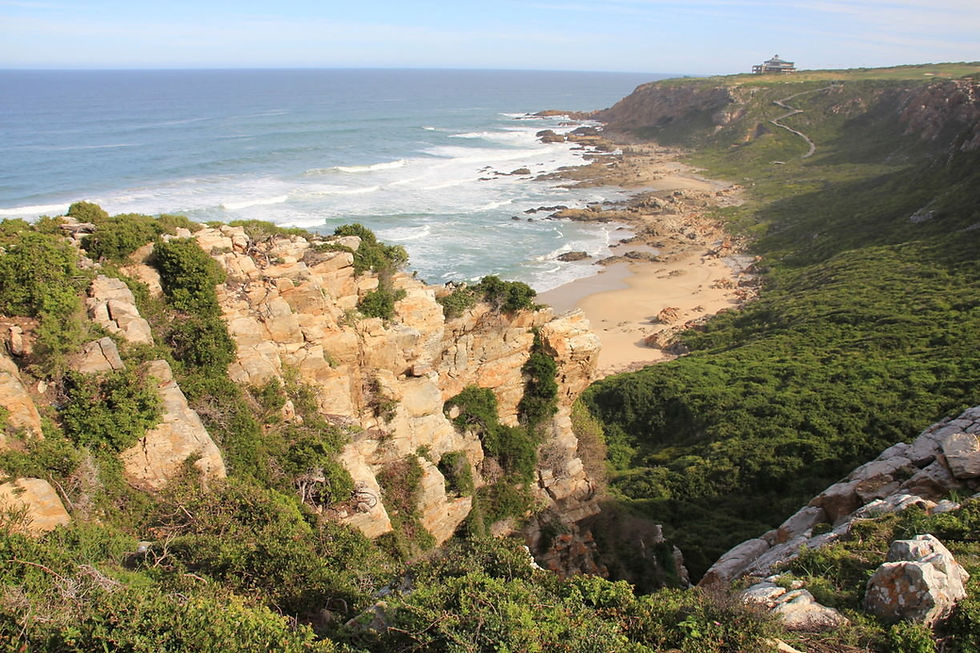A pre-historic Eden once existed for ancient humans and animals
- Sofia Eugeniou

- May 26, 2020
- 2 min read
Updated: Jul 9, 2020
A study of wildlife migration patterns at Pinnacle Point has indicated the existence of a pre-historic Eden.
Pinnacle Point is a small promontory immediately south of Mossel Bay, a town on the southern coast of South Africa.
Consisting of a series of archaeological sites, Pinnacle Point is considered one of the world's most important locations for anthropogeny, i.e. the study of (modern) humans. Excavations since the year 2000 of a series of caves at Pinnacle Point have revealed occupation by Middle Stone Age people between 170,000 and 40,000 years ago.
Home to some of the richest evidence for the behaviour and culture of the earliest "modern" humans, the now-submerged region once formed its own ecosystem.

Initially, researchers thought large omnivores would travel to Pinnacle Point to follow the growth of vegetation to survive, but latest data indicates the region was in fact an Eden to all living species that called it home, including the earliest humans.
Research spanning decades by a team from Arizona State University has helped reconstruct the setting around the time of the Pleistocene, the time period that spanned from 2.6 million to 11,700 years ago.
In a study looking specifically at antelope migratory patterns at Pinnacle Point, the team discovered the region was in fact a paradise for flora and fauna.
Helping the team come to this conclusion was a series of carbon and isotope testing of teeth enamel from various large herbivores. Data of this kind can reveal a pattern for migration by tracking changing levels of carbon from the plants an animal eats as its teeth grow.
When using the nonmigratory reedbuck as their control animal, the team of researchers found the enamel from its typically migratory friends (such as the wildebeest and springbok) showed no noticeable migratory pattern. The finding suggests the animals were content where they were.
It seems that the animals were not struggling at Pinnacle Point - it is known that powerful river systems supplied the region, meaning animals did not have to be migratory as the location was naturally resource-rich.
For our human ancestors during this period, there too was access to a rich, terrestrial environment. Hunters did not need to be as mobile because of the many herbivores roaming around.
Humans at Pinnacle Point not only survived but thrived in the haven.










Comments